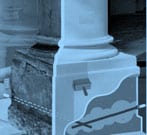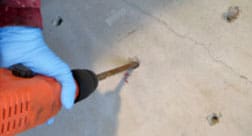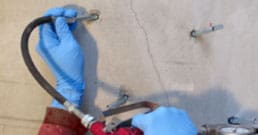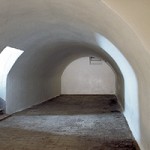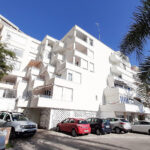Prolisur is a national benchmark in technical and special waterproofing with more than 1,000 direct actions of this type carried out since 1980.
Why repair these types of problems?
Structural defects, as well as moisture damage to walls in contact with the ground, not only affect the aesthetics of the building or the infrastructure where they are located, but can also seriously compromise functionality and/or stability. thereof.
Why Prolisur?
To respond to these problems, Prolisur offers one of the most extensive and efficient ranges of solutions in the world for the repair of masonry and concrete, using the most suitable systems to restore each affected structural element in very diverse application conditions.
Naturally, in this type of action, and especially if it affects the stability of the building’s structures, experienced professionals must be consulted and Prolisur has been specializing for more than 40 years and has the support of its own engineering department .
Building structures waterproofing problems we solve
Waterproofing masonry and solid brick masonry
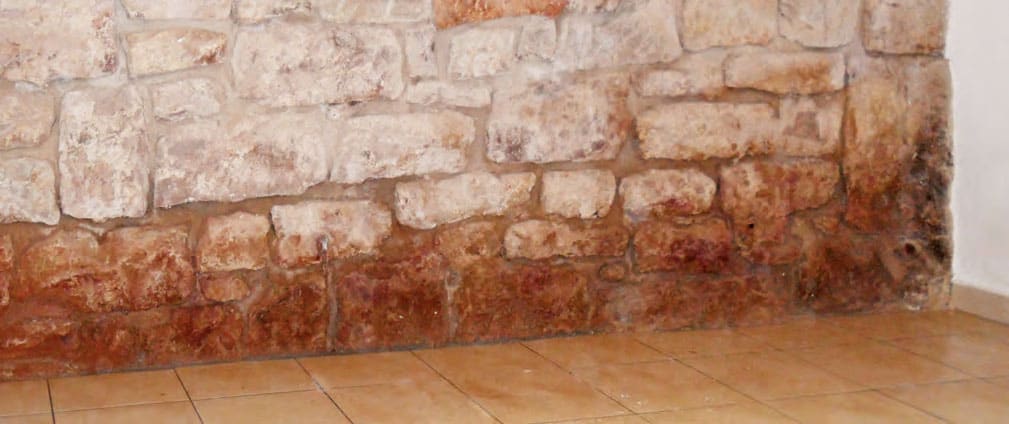
Structural elements in contact with the ground are exposed to different moisture stresses, such as seepage water, soil moisture, and groundwater. Baseboard areas are also exposed to stresses caused by splashing water, ice, de-icing salt, and thermal stresses due to temperature fluctuations.
As you would expect, professionally constructed buildings are provided with waterproofing solutions that prevent moisture from penetrating the structure. However, construction defects, changing conditions and the aging of the materials used lead to temporary or permanent moisture damage time and time again.
Among the possible causes of humidity in masonry walls and solid brick masonry, the following stand out:
- Capillary rising damp.
- Cracks and leaky joints.
- Leaks at floor-wall junctions.
- Faulty vertical seal.
- Insufficient ventilation and/or defective insulation.
- Hygroscopic humidity related to salt.
- Damaged drain, supply and return lines.
- Moisture-related stress due to penetrating groundwater or surface water.
The consequences of moisture penetration are varied:
- The thermal insulation value of the wall is decreasing, which translates into higher heat losses.
- Spores, algae and fungi find an ideal breeding ground.
- The salts penetrate the structural elements and cause the formation of efflorescence, which leads to spalling.
This can affect the long-term stability of the building. Therefore, effective measures against the penetration of moisture are necessary to safeguard the usability of the building and protect its structure.
Stabilization of structures

On many occasions it is necessary to treat the damaged structure of a building by means of specific filling, consolidation and stabilization techniques.
The load-bearing capacity of building structures can be affected due to construction defects, aging and the stresses (mechanical and chemical) to which the buildings are exposed.
The waterproofing of building structures has been a top priority for Prolisur’s engineering department for decades, and among other issues, we know that it is essential to apply systems that guarantee high resistance without prejudice to a rapid curing process. Among the different possible treatments, and although they are not always applicable, those that act through hydrophobization and capillary obstruction stand out, longer lasting than other systems.
Protection of surfaces subjected to demanding conditions


There are many surfaces that require special protection by reliable coating systems, for example:
- Underground car parks and covered parking lots.
- Floors in industry and commercial spaces.
- Car wash.
Among other threats, these surfaces are exposed not only to mechanical stress, but also to chemical and biological aggressions, as well as stresses of thermal origin. To find the most suitable surface protection system, the requirements for use must first be defined:
- Mechanical strength.
- Moisture resistance.
- Slip resistance.
- Chemical resistance.
This is followed by an inspection of the substrate and a diagnosis of damage, since only in this way will we achieve an optimal result in technical and economic terms.
In addition to the floor covering, the joints between walls play a decisive role for a lasting result.
Conservation of historical heritage
For the restoration and conservation of historic structures, Prolisur offers the best systems to protect the structure of the building from the impact of water and humidity, in case of flooding, as well as in restoration works.
Among the most frequent types of actions in the conservation of historical heritage affected by humidity, the following stand out:
- Sealed against leaks from the ground of the foundations of adjacent buildings.
- Sealing and protection of the structure against corrosion.
- Protection of facade surfaces against moisture.
Static stabilization work on the building structure is also frequent.
- Filling of cracks and cavities.
- Masonry consolidation.
- Joint repair.
- Stabilization of the foundation soil.
